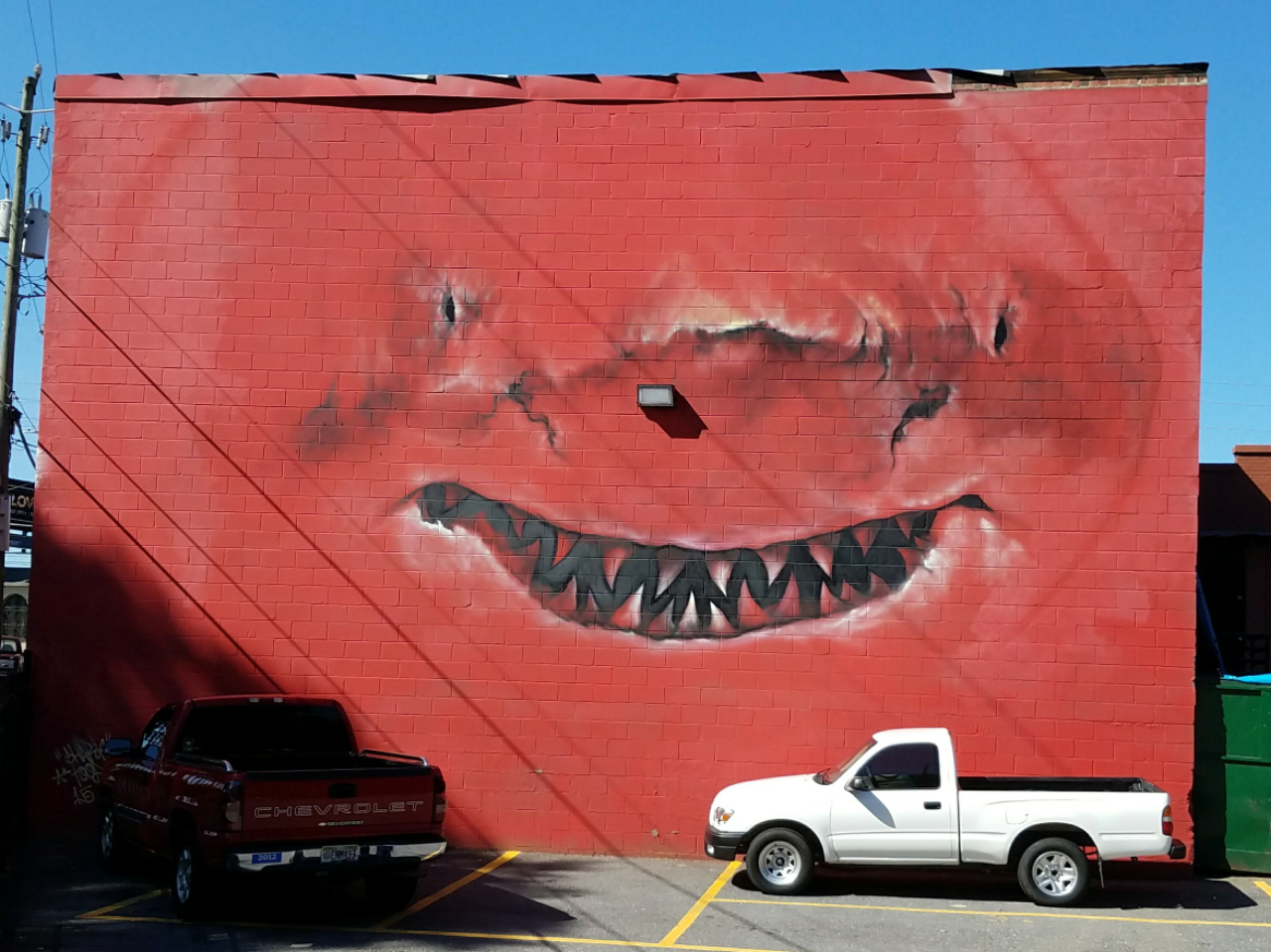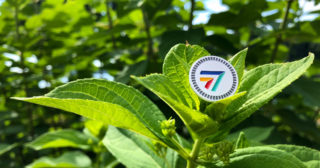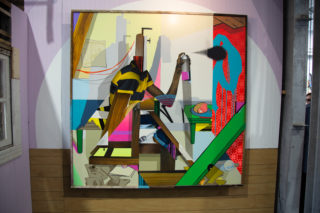A retired engineer who splits his time between Atlanta, Georgia and Ormond Beach, Florida, Art Rudick started StreetArtMap.org in 2017 and started building an online field guide for finding murals and street art around Atlanta.
We’ve been online friends since then, and Art was kind enough, both to be ArtAround’s first official art-mapper / Ambassador and to answer a few of my questions about how his interest in art outside got started.

When did your interest in street art / public art begin? What sparked it?
My very first experience with public art happened when I was about three… somewhere around 1960. My dad took me to the Pittsburgh airport to watch the planes take off and land. Inside the airport’s atrium was a huge Alexander Calder mobile. From my three-year-old perspective it wasn’t just impressive, it was magical. It made such an impression on me that I still remember my sense of awe looking at it, fifty-eight years later.
My interest in street art started about two years ago when my wife and I went to visit our niece who had an internship in New York City. We took a street art walking tour in Brooklyn — I knew that street art existed but I had no idea how beautiful the murals could be.
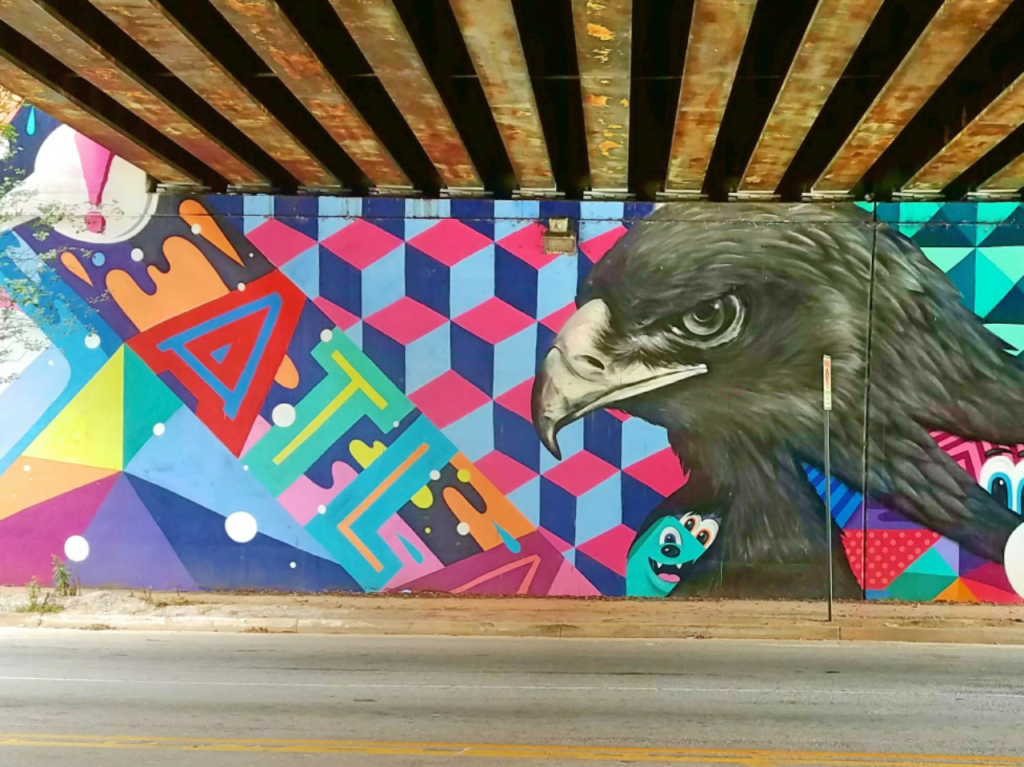
I noticed you picked “StreetArtMap” as the name of your Atlanta project. Would you say your primary interest is in street art as a kind of separate art movement? How do you see it as different from public art?
Although street art is a subset of public art, street art is different from most other types of public art because, to me, street art is the least constrained type of public art. Most other types of public art are either municipally or corporately sponsored, which often means that they are are subject to the politics and pretentions of bureaucrats and curators, whereas street art has its roots in illegal and completely unregulated graffiti. The best street art is true to its roots, when the artists do whatever they darn well please.
What do you love most about seeing art outside?
In a museum or a gallery, you expect to see art. Street art surprises you. It’s like a treasure hunt. It pops up in unexpected places.
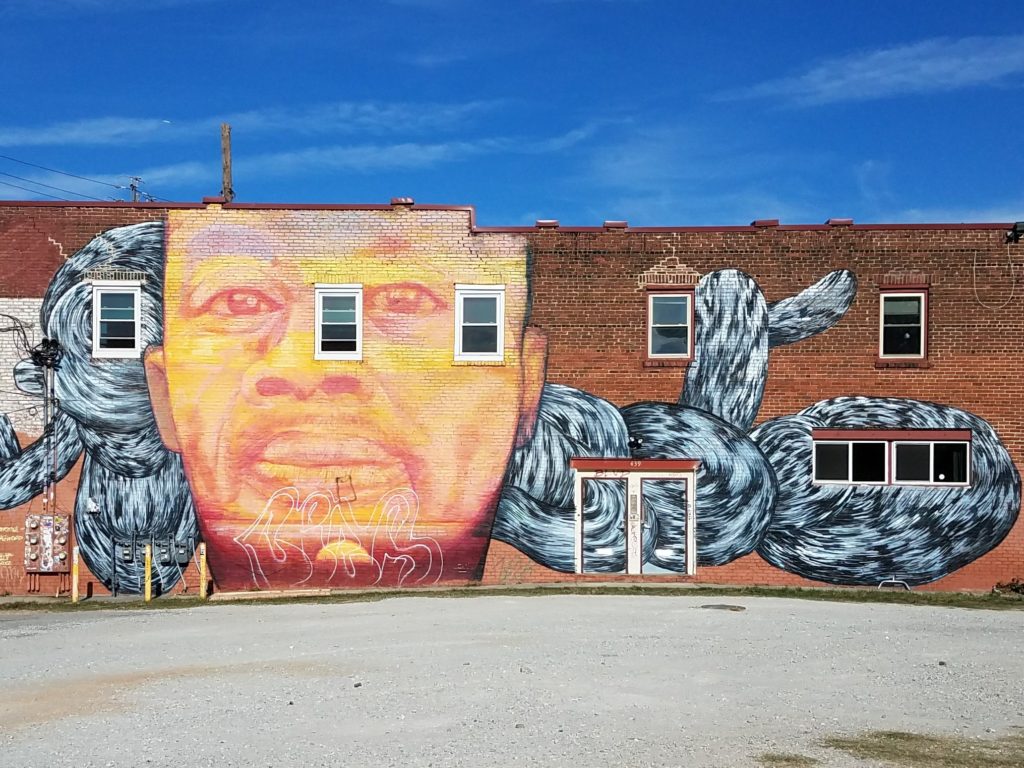
What photography tips have you picked up as you document more and more street art?
Clouds are your friend. Because street art can be anywhere outside, trees, telephone poles, and nearby buildings often cast stark shadows across portions of a mural which can detract from a photo. Clouds give you uniform lighting and eliminate harsh shadows. You can always crank up the brightness a little bit with a photo editing app later on. Sometimes I’ll wait until a cloudy day comes along to get a shot.
When framing your photo, always include some space around all sides of the mural if possible. You can always crop it later but you can’t zoom out. If a large mural is in a constrained space so that you can’t fit the entire mural into the frame, then photograph the mural in sections. Later on, you can use an app like “bimostitch” to stitch the sections into a single image.
If a mural is on the north side of a building it will always be in shade and the sun coming over the top of the wall often produces a harsh glare. Try to find a shady spot near the wall to stand in when you take the picture. Even the shade of a phone pole will eliminate the glare.
The best street art is true to its roots, when the artists do whatever they darn well please.
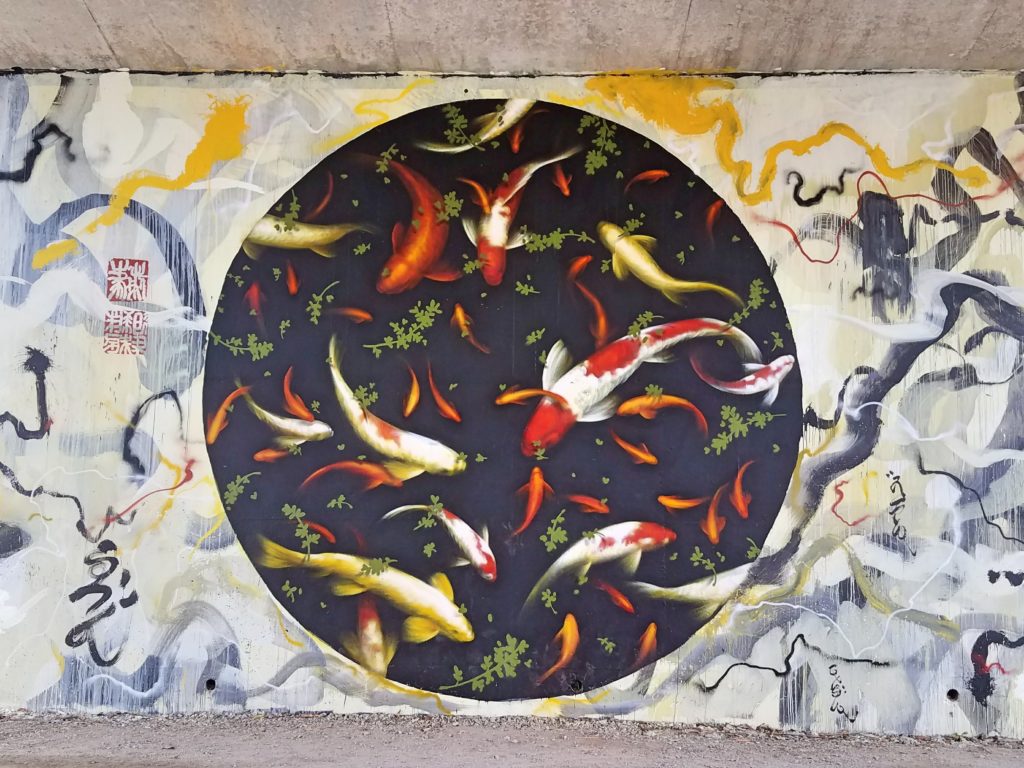
What made you want to start StreetArtMap.org?
When we went on the street art walking tour in Brooklyn, I took a lot of pictures. I started using the street art pictures as Instagram content (the same niece got me started using Instagram). When we got back to Atlanta, I wanted to take pictures of Atlanta street art for my Instagram, but I had no idea where to find it.
The few websites that featured Atlanta street art only showed a handful of murals and half of those were no longer there. There was no comprehensive source for Atlanta street art. That’s when I realized that maybe I needed to create one. I was recently retired and I had a little extra time on my hands so I decided to start my own website as a hobby.
Who are a few of your favorite street artists whose work you’ve documented? What about of all time?
I like whimsical styles of Patch Whisky, Golden305 and Binho Ribeiro. Leon Keer’s anamorphic artwork has always fascinated me. Jerkface’s work always makes me smile. Some of Nychos’ anatomical murals are amazing.
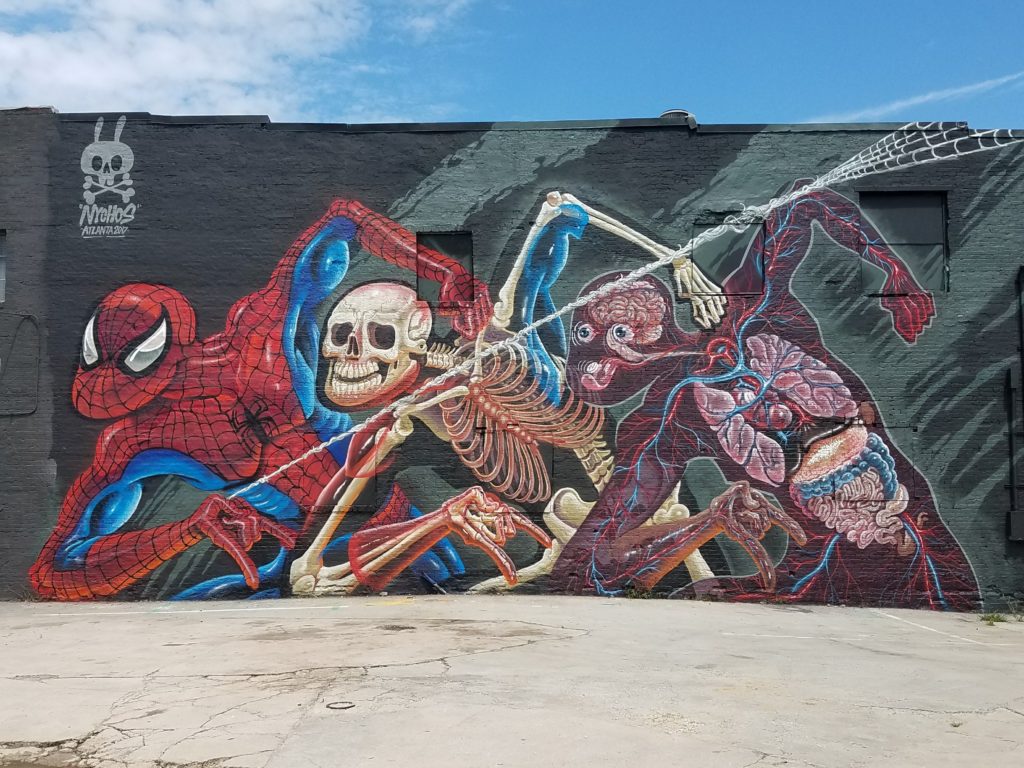
What do you see as street art’s potential?
Miami’s Wynwood Arts District is an example of street art’s potential being realized — it’s a well promoted street art tourist destination. Street art should, at least in my opinion, be as big as museum art.
Take Atlanta for example. Atlanta has over 500 murals, yet hardly anyone knows about it. There are neighborhoods in Atlanta that are open air museums of street art.
Whenever you read an Atlanta “things to do” guide, they always mention the High Museum of Art but they almost never mention the half-mile-long stretch of Forward Warrior murals along the CSX railroad wall. Cities should be as proud of their street art as they are of their museum art. The trick is how do you allow street art to reach its full potential without turning it into a Disney-like contrived tourist trap?
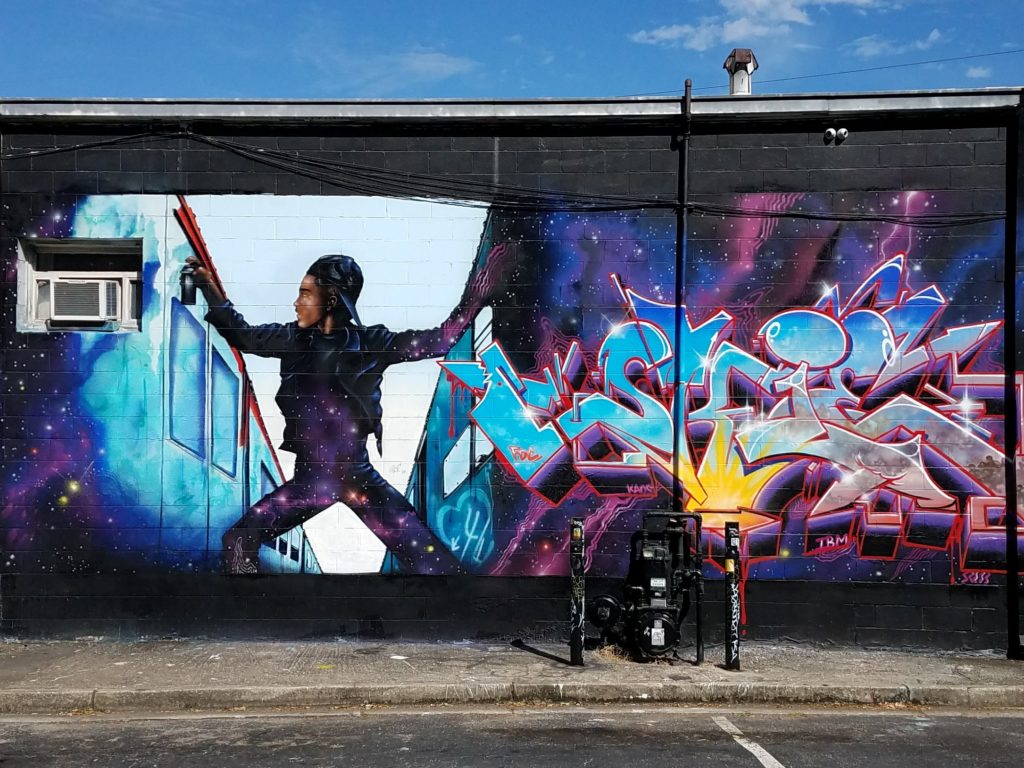
Cities should be as proud of their street art as they are of their museum art. The trick is how do you allow street art to reach its full potential without turning it into a Disney-like contrived tourist trap?
How does seeing these artworks in person compare to seeing them online?
It’s like the difference between seeing a picture of a lion on a computer screen and seeing a lion in the wild. Nobody tells their grandchildren about the time they saw a lion on a computer screen. To me the only reason for putting street art online is to encourage people to go out and see it. Like I say on my website: The Atlanta Street Art Map is a “field guide”, not a “coffee table book.”

What’s unique about the Atlanta art you’ve photographed? What should people know about the Atlanta street art scene?
The biggest thing that people should know about Atlanta’s street art is: IT’S THERE! Atlanta’s street art isn’t always in impossible-to-miss locations. It’s often hidden in back parking lots and on retaining walls that you would never see just walking down the street. That’s why I created the Atlanta Street Art Map.
Have you traveled anywhere else to document street art? What does it add to your experience as a tourist?
I’ve never gone on a vacation just to document street art. But whenever we do go on vacation, I always try to spend a day photographing the local street art. To me a city’s street art is as big an attraction as any cathedral or shopping district. Miami is probably my favorite street art city of all of the places I’ve been… it has so much world class art in a concentrated area that it’s just amazing.
The street art in Honolulu was a big surprise to me. The annual POW! WOW! festival brings a lot of fabulous murals to Hawaii’s capital. Jacksonville (where my wife has family) also has murals throughout it’s downtown (who knew!?!?) and LA (where our son used to live) has fabulous street art. I was surprised to accidentally discover that some of the best stuff in LA is in a back alley running parallel to Melrose Avenue where nobody ever goes.

ABOUT ART RUDICK
Name: Art Rudick
Age: 61
Occupation: Retired engineer
Location: Atlanta, GA half the time & Ormond Beach, Fl half the time
Hometown: Pittsburgh, PA
# of artworks mapped: 250
Header image: Shark Toof’s Shark Smile mapped by @ArtRudick in Atlanta.

